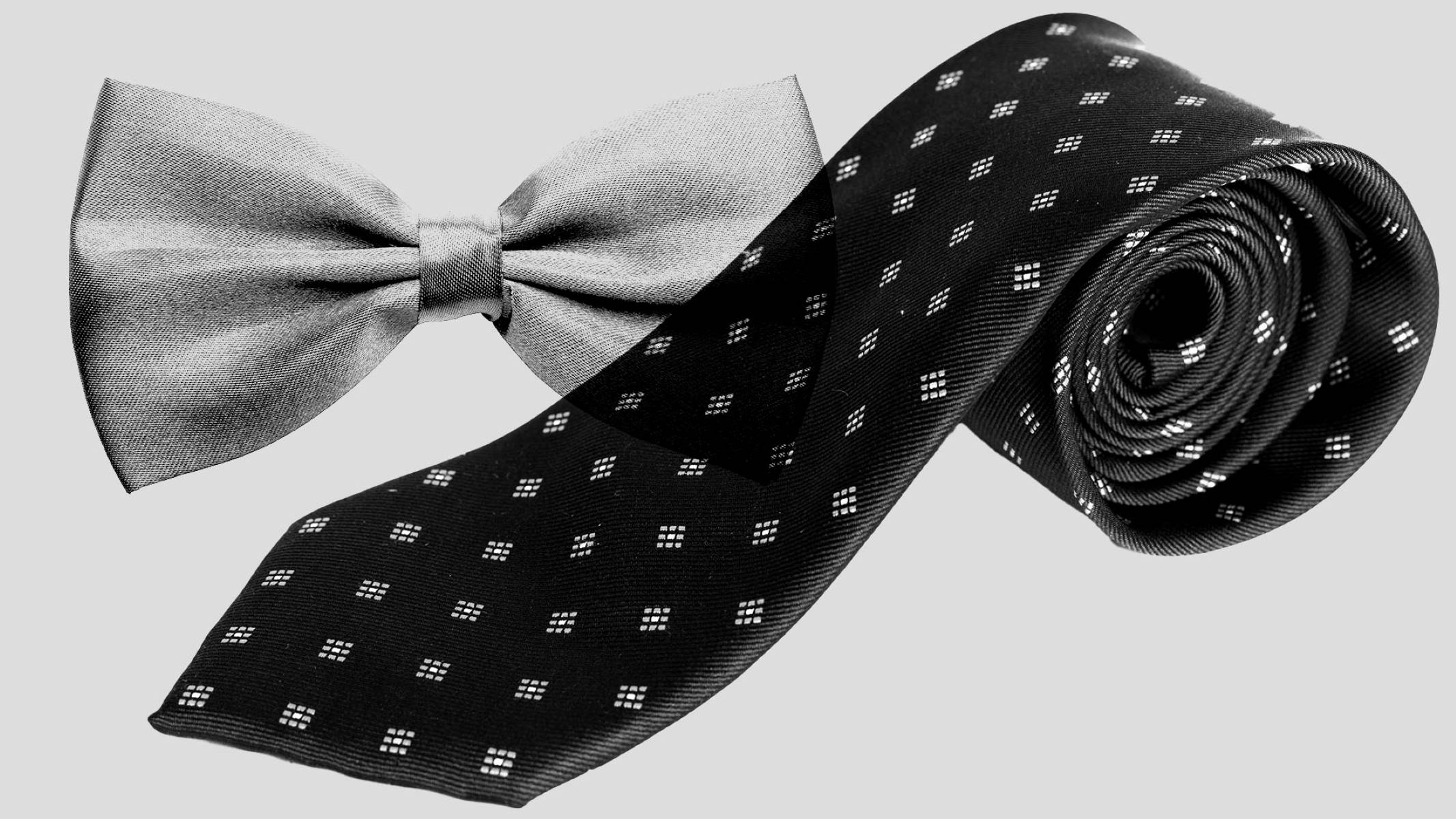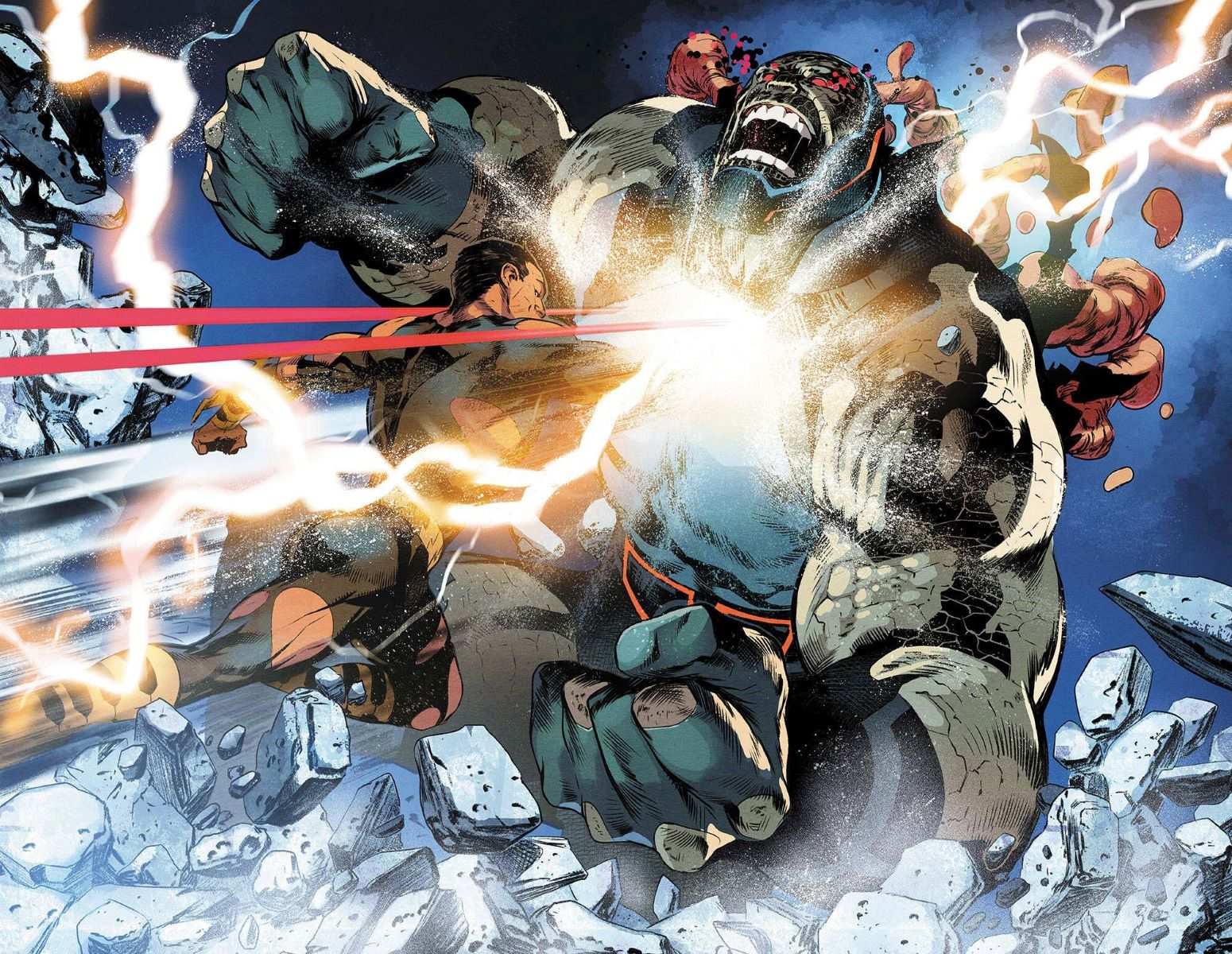Home>Lifestyle>The Ultimate Style Showdown: White Tie Vs. Black Tie


Lifestyle
The Ultimate Style Showdown: White Tie Vs. Black Tie
Published: January 24, 2024
Discover the key differences between white tie and black tie dress codes and elevate your lifestyle with the ultimate style guide.
(Many of the links in this article redirect to a specific reviewed product. Your purchase of these products through affiliate links helps to generate commission for Regretless.com, at no extra cost. Learn more)
Table of Contents
Introduction
When it comes to formal events, the dress code often sets the tone for the entire affair. Two of the most sophisticated and classic dress codes are white tie and black tie. These formal attires have a rich history and are associated with elegance, refinement, and a sense of occasion. Understanding the nuances and differences between white tie and black tie is essential for anyone attending formal events, as it ensures that they are appropriately attired and can fully embrace the spirit of the occasion.
White tie and black tie represent the epitome of formal dress codes, each with its own set of rules and traditions. While both dress codes exude sophistication and require a certain level of sartorial finesse, they are distinct in their details, from the attire itself to the occasions for which they are most suitable. Delving into the history, dress codes, and key differences between white tie and black tie will provide a comprehensive understanding of these timeless styles, allowing individuals to navigate formal events with confidence and grace.
In this comprehensive guide, we will explore the origins and evolution of white tie and black tie, dissect the specific dress codes associated with each, and highlight the key differences between the two. By the end of this exploration, you will be well-versed in the art of formal dressing, equipped with the knowledge to discern when to opt for white tie or black tie, and ready to make a statement at any formal affair. Let's embark on this sartorial journey to unravel the mysteries and intricacies of white tie and black tie, and discover the allure of these timeless dress codes.
Read more: The Ultimate Showdown: Shazam Vs Black Adam!
The History of White Tie
White tie, the pinnacle of formal attire, has a rich and illustrious history that dates back to the 18th century. Its origins can be traced to the court of King Charles II of England, where the modern tailcoat, a key component of white tie attire, first emerged. Initially, the tailcoat was worn for daytime riding, but its elegance and formality soon made it a staple of evening attire, particularly for formal events and royal gatherings.
The term "white tie" itself refers to the white bow tie worn with the ensemble, which became a symbol of aristocratic elegance and refinement. The 19th century solidified the prominence of white tie as the ultimate dress code for prestigious events, such as royal balls, state dinners, and exclusive soirées hosted by the elite.
During the Victorian era, white tie attire evolved to include a starched white shirt, a white bow tie, a black tailcoat, matching trousers, and patent leather shoes. The dress code was meticulously regulated, with specific guidelines dictating the appropriate fabric, cut, and accessories. This attention to detail and adherence to tradition solidified white tie as a timeless symbol of sophistication and social status.
In the early 20th century, white tie reached its zenith, becoming synonymous with grand galas, opera premieres, and formal diplomatic functions. The attire was favored by the upper echelons of society and embodied the epitome of formal elegance. Even as fashion norms evolved, white tie retained its prestige and remained the gold standard for the most prestigious and formal occasions.
Today, white tie continues to be reserved for the most exclusive and formal events, maintaining its aura of regal splendor and refined luxury. While the dress code has relaxed somewhat in modern times, the essence of white tie endures as a timeless emblem of grandeur and sophistication, carrying with it centuries of tradition and sartorial excellence.
The History of Black Tie
The evolution of black tie, a quintessential symbol of formal elegance, can be traced back to the 19th century. Its origins lie in the transition from the excessively formal white tie attire, which was de rigueur for evening events, to a slightly more relaxed yet still refined alternative. As the rigid sartorial norms of the Victorian era began to shift, the need for a less ornate and more practical evening dress became apparent. This shift gave rise to what would eventually be known as black tie.
The term "black tie" originated from the use of black silk bow ties as a less ostentatious alternative to the white bow ties worn with white tie attire. This subtle yet significant departure from the opulence of white tie represented a departure from strict formality while still maintaining an air of sophistication. The emergence of black tie as a formal dress code coincided with the increasing popularity of more relaxed social gatherings, such as dinners, operas, and theater outings.
The early iterations of black tie attire featured a black tailcoat, black trousers, a white dress shirt, and a black silk bow tie. This ensemble provided a sense of formality without the extravagance associated with white tie, making it well-suited for a range of evening events. Over time, the black tie dress code evolved to include a dinner jacket, often referred to as a tuxedo in American English, which offered a more streamlined and modern alternative to the traditional tailcoat.
The 20th century saw the widespread adoption of black tie attire for formal evening events, cementing its status as the go-to dress code for sophisticated affairs. The streamlined and understated elegance of black tie made it a favorite among the fashionable elite, and it became synonymous with glamour and refinement. From glamorous Hollywood galas to exclusive social gatherings, black tie became the hallmark of timeless style and sophistication.
Today, black tie remains a staple of formal events, offering a perfect balance of elegance and modernity. Its rich history and evolution reflect a shift towards a more relaxed yet still refined approach to formal dressing, making it an enduring choice for a wide range of evening occasions. The legacy of black tie continues to captivate individuals seeking to exude timeless charm and sophistication at formal affairs, ensuring its enduring relevance in the world of sartorial elegance.
The Dress Code: White Tie
White tie represents the epitome of formal attire, exuding a sense of regal splendor and refined elegance. This dress code is reserved for the most prestigious and exclusive events, where the utmost level of sartorial sophistication is expected. Understanding the intricacies of white tie attire is essential for anyone attending such formal affairs, as it ensures a seamless and polished appearance that pays homage to centuries of tradition and refinement.
The cornerstone of white tie attire is the tailcoat, a garment that epitomizes formal elegance. The tailcoat is typically black and features silk-faced lapels, meticulously tailored to create a sleek and structured silhouette. Paired with the tailcoat are high-waisted black trousers, which are designed to complement the elongated lines of the ensemble. These trousers are traditionally adorned with silk stripes along the outer seams, adding a touch of understated opulence to the attire.
The sartorial ensemble is further elevated by a crisp white dress shirt, often featuring a wingtip collar and French cuffs. The shirt is meticulously tailored to ensure a flawless fit and is typically crafted from fine cotton or linen, reflecting the commitment to uncompromising quality and attention to detail.
A hallmark of white tie attire is the white bow tie, which serves as a focal point of the ensemble. This accessory is traditionally crafted from silk and is meticulously tied to achieve a symmetrical and elegant bow. The white bow tie symbolizes the pinnacle of formal elegance and is a defining element of white tie attire.
Completing the ensemble are patent leather shoes, which add a touch of refinement and sophistication. These shoes are characterized by their high shine and sleek silhouette, perfectly complementing the formal aesthetic of white tie attire.
Accessories play a crucial role in white tie dressing, with options including a white waistcoat, formal gloves, and a decorative boutonnière. Each element is carefully chosen to adhere to the strict guidelines of white tie dressing, ensuring a cohesive and harmonious look that exudes timeless elegance.
In essence, white tie attire represents a harmonious blend of tradition, refinement, and sartorial excellence. The meticulous attention to detail and adherence to formal conventions make it a symbol of unparalleled sophistication, reserved for the most prestigious and formal occasions. Embracing the dress code of white tie is a testament to an appreciation for timeless elegance and a commitment to upholding the grandeur of formal dressing.
The Dress Code: Black Tie
Black tie attire embodies a timeless blend of sophistication and modernity, making it the quintessential choice for formal evening events. This dress code strikes a perfect balance between elegance and practicality, offering a versatile and refined ensemble that exudes understated glamour. Understanding the nuances of black tie attire is essential for anyone seeking to make a lasting impression at formal affairs, as it represents a harmonious fusion of tradition and contemporary style.
At the heart of black tie dressing is the iconic dinner jacket, also known as a tuxedo. This tailored jacket, traditionally black, features satin or grosgrain lapels, adding a touch of refinement to the ensemble. The dinner jacket is meticulously crafted to create a sleek and structured silhouette, epitomizing modern elegance while paying homage to timeless sartorial traditions.
Complementing the dinner jacket are black trousers, tailored to perfection to ensure a flawless fit and a polished appearance. These trousers harmonize with the jacket, creating a cohesive and sophisticated aesthetic that is synonymous with black tie dressing.
A pristine white dress shirt serves as the foundation of the ensemble, exuding a sense of classic refinement. The shirt is typically adorned with a formal spread or wingtip collar and French cuffs, elevating the overall look with a touch of understated elegance. Crafted from fine cotton or linen, the shirt reflects a commitment to uncompromising quality and attention to detail.
The black silk bow tie, a hallmark of black tie attire, serves as the focal point of the ensemble. Tied in a symmetrical and elegant bow, the bow tie exudes timeless charm and sophistication, adding a touch of individuality to the overall look. Its understated yet essential role in black tie dressing symbolizes the commitment to refined style and attention to detail.
Completing the ensemble are black patent leather shoes, characterized by their sleek silhouette and high shine. These shoes exude sophistication and add a final touch of refinement to the overall attire, ensuring a polished and cohesive appearance.
In essence, black tie attire represents a harmonious fusion of tradition and modernity, offering a versatile and refined dress code for formal evening events. Embracing the elegance of black tie dressing is a testament to an appreciation for timeless style and a commitment to exuding sophistication and refinement at every formal affair.
White Tie vs. Black Tie: Key Differences
White tie and black tie, while both representing formal dress codes, exhibit distinct differences that set them apart in terms of formality, historical significance, and sartorial details. Understanding these key differences is essential for individuals navigating formal events, as it allows them to select the appropriate attire that aligns with the specific tone and level of sophistication of the occasion.
Formality and Occasions
White tie attire is the epitome of formal dressing, reserved for the most prestigious and exclusive events such as state dinners, royal balls, and formal diplomatic functions. It exudes an unparalleled level of grandeur and sophistication, making it the ultimate choice for occasions that demand the highest level of sartorial elegance. In contrast, black tie attire, while still formal and refined, represents a slightly more relaxed alternative suitable for a wide range of evening events. From elegant galas and formal weddings to sophisticated soirées and cultural performances, black tie attire strikes a balance between formality and practicality, making it a versatile choice for various formal occasions.
Sartorial Details
The sartorial details of white tie and black tie attire further underscore their differences. White tie attire features a tailcoat, high-waisted trousers with silk stripes, a wingtip-collared dress shirt, and a white bow tie. The emphasis on tradition and formality is evident in the structured silhouette and meticulous attention to detail, reflecting a commitment to upholding centuries-old sartorial conventions. On the other hand, black tie attire centers around the dinner jacket, black trousers, a formal white dress shirt with French cuffs, and a black silk bow tie. The streamlined and modern aesthetic of black tie attire, while still adhering to formal standards, exudes a sense of contemporary elegance and sophistication.
Symbolism and Tradition
The symbolism and tradition associated with white tie and black tie attire further distinguish the two dress codes. White tie, with its regal history and aristocratic origins, symbolizes the pinnacle of formal elegance and social status. It embodies centuries of tradition and is steeped in the customs of the elite, making it a symbol of unparalleled refinement and sophistication. In contrast, black tie, while still embodying a sense of sophistication and timeless style, represents a departure from the opulence of white tie, reflecting a shift towards a more modern and accessible approach to formal dressing. Its evolution from the strict formality of white tie to a more relaxed yet refined alternative underscores its adaptability and enduring appeal in the world of formal attire.
In summary, the key differences between white tie and black tie attire encompass the level of formality, the specific occasions for which they are most suitable, the distinct sartorial details, and the symbolism and tradition they embody. By understanding these differences, individuals can navigate formal events with confidence, selecting the appropriate attire that aligns with the tone and level of sophistication of each occasion.
When to Wear White Tie vs. Black Tie
The choice between white tie and black tie attire is intricately linked to the specific tone and level of formality of the event. Understanding the appropriate occasions for each dress code is essential for individuals seeking to make a lasting impression and adhere to sartorial etiquette.
White Tie:
White tie attire is reserved for the most prestigious and exclusive events that demand the highest level of sartorial elegance and grandeur. It is the epitome of formal dressing and is traditionally worn to occasions such as state dinners, royal balls, opera premieres, formal diplomatic functions, and exclusive galas hosted by the elite. The regal splendor and aristocratic origins of white tie make it the ultimate choice for events where the highest level of formality and sophistication is expected. Its rich history and association with the customs of the elite underscore its significance as a symbol of unparalleled refinement and social status.
Black Tie:
Black tie attire, while still formal and refined, represents a more versatile and accessible option suitable for a wide range of evening events. It is the quintessential choice for formal occasions such as elegant galas, formal weddings, sophisticated soirées, cultural performances, and upscale social gatherings. The streamlined and modern aesthetic of black tie makes it well-suited for events that require a balance between formality and practicality. Its enduring appeal and adaptability ensure that it remains a timeless choice for individuals seeking to exude sophistication and elegance at formal affairs.
In essence, the decision to wear white tie or black tie is guided by the specific nature and level of formality of the event. White tie is reserved for the most prestigious and exclusive occasions, where the highest level of sartorial elegance and refinement is expected, while black tie offers a versatile and refined option suitable for a wide range of formal evening events. By understanding the distinct occasions for which each dress code is most suitable, individuals can make informed choices that align with the tone and significance of each event, ensuring a polished and appropriate sartorial appearance.
Conclusion
In the world of formal attire, the distinction between white tie and black tie represents a timeless dichotomy of sartorial elegance. The journey through the history, dress codes, and key differences between these two iconic styles has unveiled a rich tapestry of tradition, refinement, and sophistication. White tie, with its regal origins and aristocratic allure, stands as the pinnacle of formal dressing, reserved for the most prestigious and exclusive events. Its enduring legacy as a symbol of unparalleled refinement and social status is a testament to centuries of tradition and sartorial excellence.
On the other hand, black tie, with its understated glamour and modern sensibility, embodies a versatile and refined approach to formal attire. From glamorous galas to sophisticated soirées, black tie attire strikes a perfect balance between elegance and practicality, ensuring a timeless and sophisticated appearance at a wide range of formal events.
The distinction between white tie and black tie extends beyond mere sartorial guidelines; it encompasses a profound understanding of historical significance, symbolism, and the evolving nature of formal dressing. The ability to discern when to embrace the opulence of white tie and when to opt for the understated elegance of black tie is a testament to an individual's appreciation for tradition, refinement, and the art of dressing for the occasion.
Ultimately, the exploration of white tie and black tie attire serves as a reminder of the enduring allure of formal dressing and its ability to transcend time and trends. Whether donning the regal splendor of white tie or the modern sophistication of black tie, individuals have the opportunity to embody the timeless elegance and refinement that define these iconic dress codes. As formal events continue to shape the social landscape, the legacy of white tie and black tie remains steadfast, offering individuals the opportunity to make a lasting impression with a sartorial nod to tradition and sophistication.













